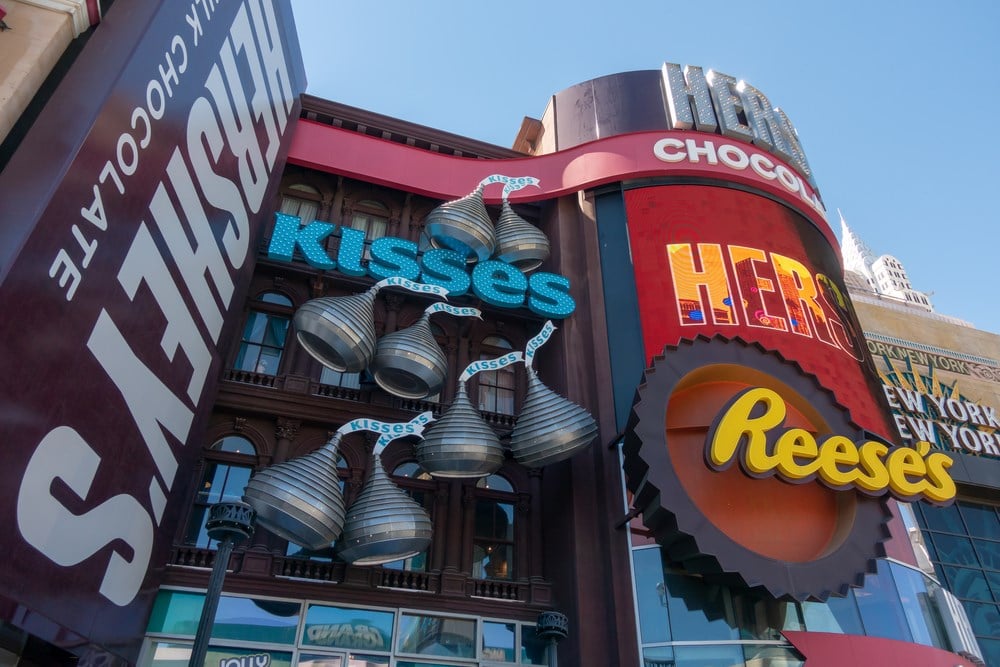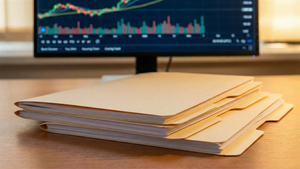
When a large enough company, around $41 billion in this case, declines in valuation by nearly 30% in less than twelve months, everyone should be headed to it to figure out two things. Is the business going bust, or did something happen to upset the market temporarily?
Today, Hershey (NYSE: HSY) is one of those unusual low beta stocks that fell victim to broader market volatility and fear. However stressful the declines may have been, savvy value investors will be drooling over this fantastic value deal in a company that makes the public drool over its products.
Part of an all-American portfolio of entrenched brands, up there with the likes of Coca-cola (NYSE: KO) and Walt Disney (NYSE: DIS), the brand recognition and penetration alone opens up the floodgates for myriad other benefits, ones you can begin to exploit today.
The Protein of the Deal
Typically, when a business reaches the recognition that Hershey has, there are added economic benefits that come with the position. In this case, the first sign comes via pricing power, as Hershey's financials will show a steady gross margin above 40%.
Despite the COVID-19 pandemic, Hershey still sustained its gross margin position, which speaks to robust cost control systems and deeply developed relationships with suppliers and shipping networks. Supply chain issues? That sounds like a problem for someone else.
Working down the business, efficiencies begin to show themselves throughout. Net income margins steadily come in a 10-15% range, which is magnificent for a company of this kind.
So the business is well-built, like a top-of-the-line race car, but does that guarantee the pilot can handle this beast? A way to test management's ability and efficiency is through a simple metric called ROIC (return on invested capital), a surefire way to tell if there are signs of intelligence.
For Hershey, ROIC has averaged 17% throughout the past five years, again remaining strong throughout the COVID-19 pandemic.
Understanding that the average business in America generates an average ROIC of 8-10% puts things in a different perspective, but why is this metric so important? As Albert Einstein says, compound interest is the world's eighth wonder.
In the long term, stock prices begin to mimic ROIC - or exceed it - when it comes to price appreciation. Through a combination of profits and stock buybacks, Hershey's stock has gone up an average of 31.5% per year during the past five years.
Will History Repeat Itself?
Analysts believe the multi-year momentum, both in technicals and fundamentals, is here to stay. They have put their money where their mouth is by assigning a consensus price target of $262.1 a share in this stock, which would require the company to rise by 31% to meet it.
Investors seldom find a business that is as solid as this every day without overpromises of exorbitant or unsustainable growth and still expect double-digit returns. Moreover, the stock offers a 2.4% annual dividend yield on top of these qualities.
But where is all this positive sentiment coming from? Perhaps you can find one of the most significant discrepancies between business and stock performance in the following data.
The stock is down nearly 30% from its all-time high price this year, while earnings per share grew by 29.4% in the latest quarterly earnings results. All else being equal, stock prices should move at a similar rate to EPS percentage changes; the gap has been spotted!
This is all good, but it reflects the past; what about the next year? Management has provided their outlook for earnings, which stand to grow at an expected 13-15% rate, creating an even larger wedge between actual business performance and lackluster stock performance.
Nothing else needs to be said regarding Hershey being a good value play. However, it only becomes valuable if investors can pay the right price. Moving deeper than analyst price targets, management has hinted at their value opinion.
Within the same quarterly report, cash flow statements reveal a nearly $240 million share repurchase transaction, representing 0.6% of the company's size.
This implies that, even at previously higher prices, insiders still thought the stock cheap enough to buy and, more importantly, saw enough upside shortly.
During times of rising volatility, investors typically rotate their portfolios to find the best quality stocks that offer low betas; in the case of Hershey, average investors have a chance to get a leg up on Wall Street before buying in bulk.





